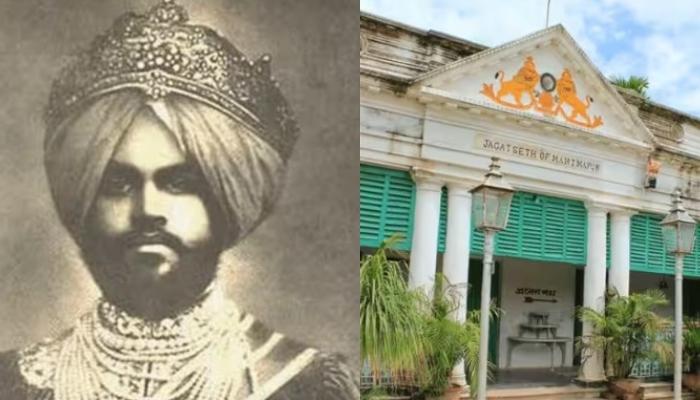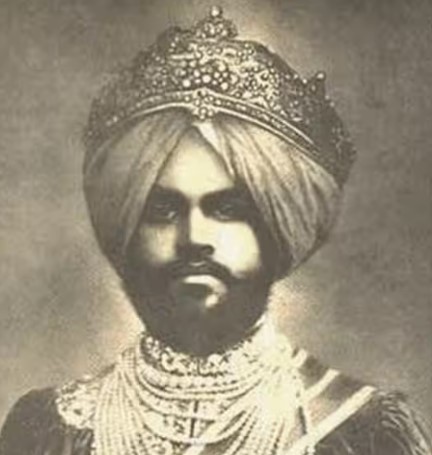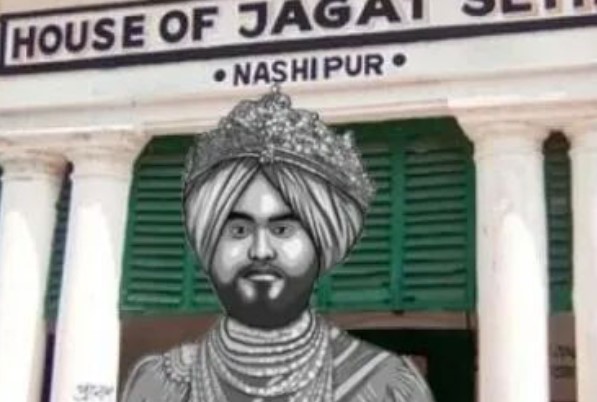About Us
Advertise With Us
RSS Feed | Content Syndication
Terms & Conditions
Privacy Policy
Contact Us
BollywoodShaadis.com © 2025, Red Hot Web Gems (I) Pvt Ltd, All Rights Reserved.

India was once considered the wealthiest nation and was called the ‘Golden Bird’ before the British came to India. During that time, there were many rich families, who had immense wealth. Before the colonial rule, India was a hub of wealth, and there were many businessmen, bankers, merchants and traders, who contributed significantly to India’s wealth and culture.
Despite the British rule, there were some names who used to rule the country with the power of their money, and one such name was Jagat Seth of Murshidabad district in West Bengal. Known as Seth Fatehchand, Jagat Seth was a merchant and a banker in the 18th century, whose net worth was roughly Rs. 8.3 lakh crores and assets worth USD 1 trillion. Let us delve into more details about him.
Also Read: Inside Mahatma Gandhi And Kasturba Gandhi's Beautiful Tale Of True Love And Patriotism

The title of ‘Jagat Seth’, which meant, ‘banker or merchant of the world’ was conferred to Manik Chand by Mughal Emperor Farrukh Siyar. The head of the family was Hiranand Shah from Nagpur, Rajasthan, who came to Patna in 1652. During this time, Patna was the hub of trade, and Hiranand started his saltpetre business, and the Europeans were the highest buyers of it.

Along with the flouring business, Hiranand Shah also increased the work of lending money on interest and soon became one of the richest moneylenders. Hiranand had seven sons, and all of them were involved in various businesses. One of his sons, Manik Chand came to Dhaka from Patna in the 1700s and helped Prince Farrukhsiyar financially to become the Mughal Emperor, and as an award, the emperor conferred him with the title of ‘Jagat Seth’.
Continue reading below

Manik Chand ruled the financial market for nearly fifty years through his business tactics and political power. Jagat Seth was called the greatest banker and money changer in Bengal and had the monopoly of minting coins. The company owned by Jagat Seth’s family was compared with the Bank of England. Jagat Seth’s company performed a variety of duties for the Bengal government.
Recommended Read: 8 Celebrities Who Were Not Allowed To Meet Their Children Because Of Ugly Separation From Spouse

Apart from producing coins, the company was involved in tax collection, financial management and foreign currency. As per multiple reports, the wealth of the Jagat Seth’s family was more than the British Empire, and the properties owned by them were worth 1 trillion USD. Some reports also stated that the British economy in the 1720s was smaller than Jagat Seth’s wealth. Manik Chand and Murshid Quli Khan, the first Nawab of Bengal were close friends, and together they established Murshidabad, the new capital of Bengal and made a lot of money by aiding the French, British and Portuguese colonial powers in war. Murshid used the credit network of the Jagat Seth family to pay annual tribute to the Mughal Emperors.

After Manik Chand, the power of the Seth family came to Fateh Chand, and during this time, the Seth family reached even greater heights. The Seths planned and financed a military coup to bring Alivardi Khan to the throne of Bengal. It was stated that the Seth were so powerful that they could make or break anyone in Bengal, including the ruler, with their political and financial powers.
Also Read: Dr Lal PathLabs' CEO, Vandana Lal: Transformed 'Sasur's Company And Made Rs. 3100 Crore Net Worth

Fateh Chand was succeeded by Mahtab Chand and his relative Maharaj Swarup Chand. During the reign of Alivardi Khan, Mahtab Chand and Maharaj Swarup Chand had tremendous power. Everything changed for the Jagat Seth family when Siraj ud-Daulah came to power. The new Nawab of Bengal, Siraj ud-Daulah demanded a huge tribute of 30 million rupees from the Jagat Seth family, which they refused, and as a result, Siraj ud-Daulah had even hit them.

The Jagat Seth family conspired with Robert Clive of the East India Company and funded the British for the conspiracy to fight with Siraj ud-Daulah. After the battle of Plassey, Siraj ud-Daulah was defeated, and Mir Qasim became the new Nawab.

In 1763, Mir Qasim organized the killing of several members of the Jagat Seth family, including Jagat Seth Mehtab Chand and his cousin, Swarup Chand and their bodies were thrown off the ramparts of Munger Fort. After the death of Mahtab Chand, his son, Kushal Chand was granted the title of Jagat Seth, who was just 18 when he was given the title. Kushal not only lacked his father’s political or business acumen but was also a spendthrift.

By the 1860s, the fortune of the Seth family started to decline by a considerable amount. They lost control over the lands they owned, and the money they lent to the British East India Company was never returned to them. By the 1900s, the Jagat Seths disappeared from the public eye. The house of the Jagat Seths, where illegal trade plans were hatched through a secret underground tunnel, has been converted into a museum located in Murshidabad.
Just like the Mughal Empire, the descendants of the Jagat Seth family are not known. Had the family’s legacy been continued, the world’s richest men like Jeff Bezos, Elon Musk, Bill Gates, Ambanis and Birlas would have looked like paupers.
Also Read: India's Richest Cricketer, Samarjitsingh Ranjitsinh Gaekwad With Net Worth More Than Dhoni And Virat
advertisement
advertisement
advertisement
